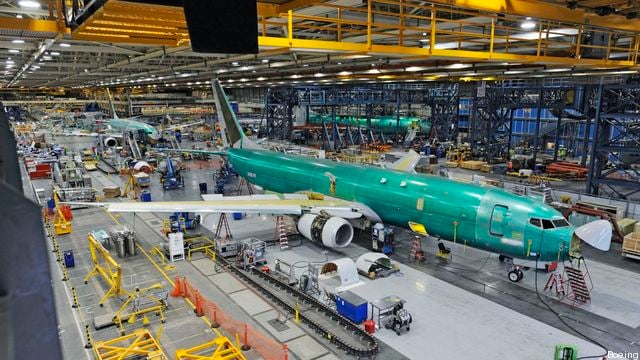
WASHINGTON: A new State Department-approved deal to sell six more P-8 submarine-hunting aircraft to India comes with the provision that 30% of the acquisition cost be spent in the Indian aerospace sector, an offset in keeping with the government’s push to bolster industrial capacity at home.
The “Make in India” program, promoted by Prime Minister Narendra Modi, has pulled in production on F-16s, P-8s, helicopters and missiles in recent years, as US companies compete hard to win billions in new contracts with a nation seen by Washington as a critical ally in containing China.
Prior to the new deal for six P-8s, Boeing had sold 12 of the aircraft to New Delhi over the past decade, all of which carried the same 30% provision.
The terms of the agreement state that some P-8I parts and components will be made in locally, but Boeing can also get offset credit for components for other Boeing platforms sold to in India.
There are also indirect offsets which involve more than manufacturing like IT, services and tech transfer, as long as they relate to the aerospace industry.
The offset program established between the company and the Indian government kicked off during the 2009 sale. The Indian companies involved in the manufacturing of P-8I parts and components, include those building “structures, composites, electronics and wiring harnesses,” a Boeing spokesperson said.
The local companies include Hindustan Aeronautics Limited, TATA Advanced Materials, BDynamatic Technologies, Bharat Electronics, Electronics Corporation of India, Rossell Techsys, Avantel, Fokker Elmo Sasmos, and Kineco.
“We are committed to delivering offset programs that are in line with India’s Defence Acquisition Procedure and meet the Indian government’s stated goals, including strengthening India’s aerospace capabilities,” a statement from Boeing said.
India already operates 12 of the aircraft it has dubbed the “Neptune,” after it purchased eight from Boeing in 2009 via Direct Commercial Sale, and another four more in 2016. “This proposed sale of an additional six P-8I aircraft will allow the Indian Navy to expand its maritime surveillance aircraft capability for the next 30 years,” the Pentagon’s Defense Security Cooperation Agency noted in its announcement of the proposed deal.
The large offsets aren’t unique to Boeing. Lockheed Martin is working to sell India on its F-21 fighter, a derivative of the F-16, which would be built in India in a partnership with Tata. And European companies often offer impressive packages of their own.
The deal follows a rushed delivery of maritime patrol helicopters to India last year also aimed at keeping track of submarines operating in the Indian Ocean, a growing threat evidenced last year with the discovery of a dozen Chinese Haiyi, or Sea Wing, underwater drones operating in the eastern Indian Ocean.
The urgent May 2020 deal was part of a decade-long process India has undergone to replace its aging fleet of British-made naval helicopters as the Chinese surface and subsurface drones and submarines venture further into the Indian Ocean.
With New Delhi in a hurry to begin getting the state-of-the-art helicopters into use, and the US government eager to pull India closer as a hedge against growing Chinese naval capabilities, the US Navy allowed Sikorsky to take three of its brand new MH-60R Sea Hawks and begin modifying them to Indian standards to deliver this spring. The helicopters are part of a $900 million deal with Sikorsky for 24 MH-60R helicopters that will be delivered to India in 2023 and 2024.
The Obama administration designated India a Major Defense Partner in 2016, which grants New Delhi access to sensitive US defense technologies at a level comparable to NATO allies. The move put pressure on Russia, which had just lost out to the US on a $3 billion deal to Boeing for Apache and Chinook helicopters for which Moscow offered its Mi-28 Havoc and Mi-26 helicopters.
Air Force picks Anduril, General Atomics for next round of CCA work
The two vendors emerged successful from an original pool of five and are expected to carry their drone designs through a prototyping phase that will build and test aircraft.


























